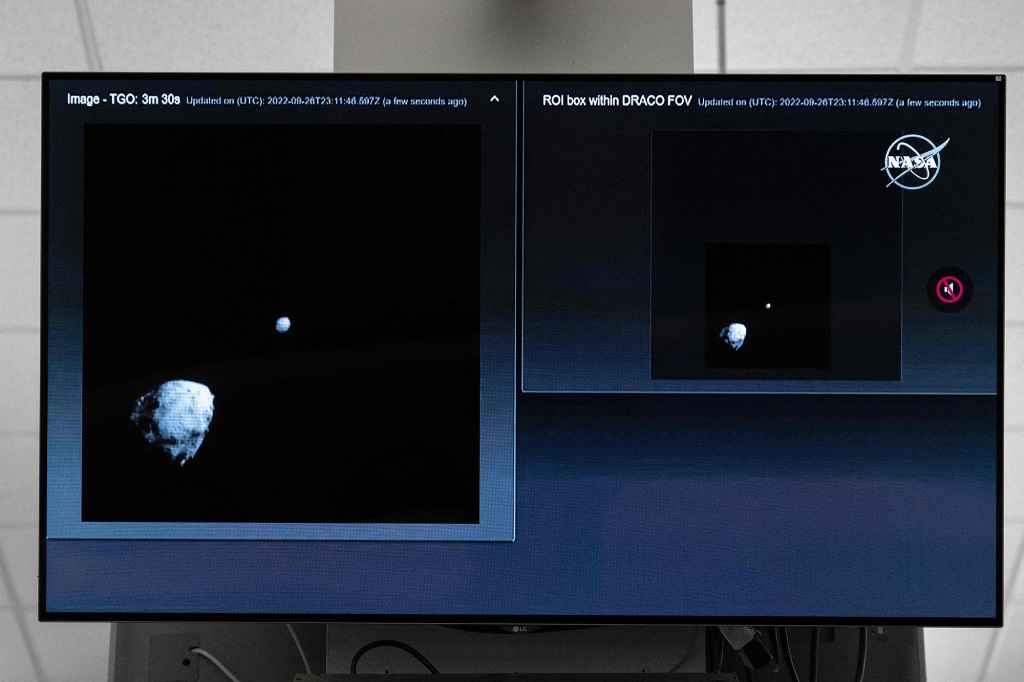More On: NASA
NASA has released the first pictures of its successful DART asteroid mission
NASA is planning to crash a spacecraft on purpose into an asteroid to help save Earth
Phantom Galaxy looks more beautiful than ever in new photos
NASA can't launch its new moon rocket because of fuel leaks
On the Artemis test flight, the head of NASA says, 'Nothing will go as planned'
On Tuesday, NASA released stunning pictures of the DART spacecraft's planned collision with an asteroid.
The LICIACube (Light Italian Cubesat for Imaging of Asteroids), which is about the size of a vending machine, has a tiny camera attached to its tail. The Italian Space Agency shared the first pictures taken by this camera.
The pictures were sent back to Earth from seven million miles away about three hours after NASA hit the asteroid successfully on Monday night during a test run to prepare for when a big space rock actually threatens Earth.
Images from the Italian Space Agency (Agenzia Spaziale Italiana) show the asteroid before and after it hit, with clouds of debris surrounding the 530-foot Dimorphos space rock. One picture shows that the spacecraft hit with a bright flash of light.
Elisabetta Dotto, who leads the science team at Istituto Nazionale di Astrofisica (INAF), said at a news conference in Italy on Tuesday, "We're really very proud."
The pictures are the first of many that will be shown in the next few days.

“Dimorphos is completely covered really by this by this emission of dust and detritus produced by the impact,” Dotto said.
Around 7:15 p.m. Monday, the Double Asteroid Redirection Test, or DART, crashed into Dimorphos at a speed of 15,000 miles per hour, destroying the craft as planned.
Scientists say that the spacecraft was able to get the moon out of its 12-hour orbit.

Space.com says that astronomers are now keeping an eye on the Didymos asteroid system to figure out how much Dimorphos' orbit has sped up.
Giorgio Saccoccia, President of ASI, told reporters, "We still need a little bit of patience. Let the scientists talk so we can understand what these images are worth."
The $325 million mission is probably only going to help people in the future. According to the Planetary Defense Coordination Office, no known asteroid larger than 450 feet is expected to hit Earth in the next 100 years.
LICIACube is Italy's first mission to deep space. It is now hurtling through the depths of space toward the edge of the universe as it keeps sending pictures back to Earth.





















